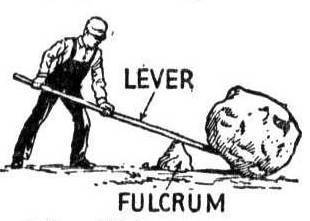Michael wrote that he recently purchased Master Hwa's DVD series and has some questions about the Tai Chi Classics saying not to lean the body, the weight distribution of the body, the Tai Chi Classics, and Yin and Yang:
"As I watched the video more intently, I'm being drawn to the movement of the lower limbs from the hips down. Can I assume that master Hwa advocates the separation of yin-yang footing with 100% weight on one leg and the other 0% in all postures (except the end of the single whip)? While I understand the significance of the weight shifting from one stance to another - I'm interested to know the weight distribution of the brush knee step at the end. Is it 100% in the front leg, and the back leg is insubstantial? I'm studying the classics by zhang sang Feng, and the classics mentioned that one should not lean on any side. I would interpret this as leaning forward, backward, or at the sides - but if there is 100% weight on one leg, I do assume that there is a leaning force involve? "
In Classical Tai Chi, my teacher, Master Stephen Hwa, explains the principles of movement (the how and why) in terms of Yin and Yang. He also explains the regulations in terms of "bodyweight distribution." When one moves, they do not let their weight "distribute" itself in an out-of-control manner. Carrying the weight in an out-of-control way is a grievous error and can have both health and martial consequences. This concept is explained in detail: DVD series, Yahoo Email Group, Classical Tai Chi Forum, Classical Tai Chi Website (Table of Contents for DVD).
When one takes a step forward in Classical Tai Chi, the weight stays 100% on the back foot until the front foot is flat on the ground 0%. The practitioner will then pull the body forward till the bodyweight of 100% is on the front foot, with the back foot becoming 0%. The body weight distribution is both dynamic, fluid, and continuous through all postures with no exception. The correct movement for weight distribution is illustrated in the Tai Chi Walk, as seen in the attached video link to Youtube.
An understanding of "leaning" in Classical Tai Chi should encompass the thought that one should take the Tai Chi Classics with the proverbial "grain of salt." The Classics are, as Master Hwa has said and are "attributed to various authors." Regardless of who wrote them, we did not hear of them until Wu Yu Xiang "finds them in a Salt Shop." The Classics, for one, do not specify what they mean by "lean." Did "do not lean" by the mystical Zhang Sanfeng mean do not lean at all, do not lean too much? 倾斜, is defined as "incline, tip, bias, slope, but I cannot find the word "lean" defined as "incline" in Chinese. Lean in Chinese is more like "thin" as in a lean piece of meat. happen to like "incline" better than the word "lean" used for Tai Chi terms and in pinyin one says "Qingxie."
There is the term "incline" in the Wu Family Gold Book as elucidated by Grandmaster Wu Kung Cho. What he means is do not "incline" by breaking at the waist. You see a lot of "breaking at the waist" in some styles of Tai Chi; it is painful to watch. Master Hwa does use the term "lean." In his explanation, he makes it work in English where "incline" would not. He does not caution against it, as does Zhang Sanfeng; on the contrary, he tells us how and why we need to do it. You can read it in detail on page 56 of his treatise in "Uncovering the Treasure." I think there is a crucial point regarding not "breaking at the waist" when he says: "The head, the body, and the back leg form a straight line in the lean forward." One can readily see that breaking at the waist would break the straight line and any energy flow.
To sum it up, while having some key insights, the Classics are often filled with "contrariness" and can be very cryptic. Therefore, I would not attribute deviation in basic principles of Classical Tai Chi to what are often contrary statements in the Tai Chi Classics, hence "take it with a grain of salt." No pun on the "Salt Shop" of the Classics discovery intended.








